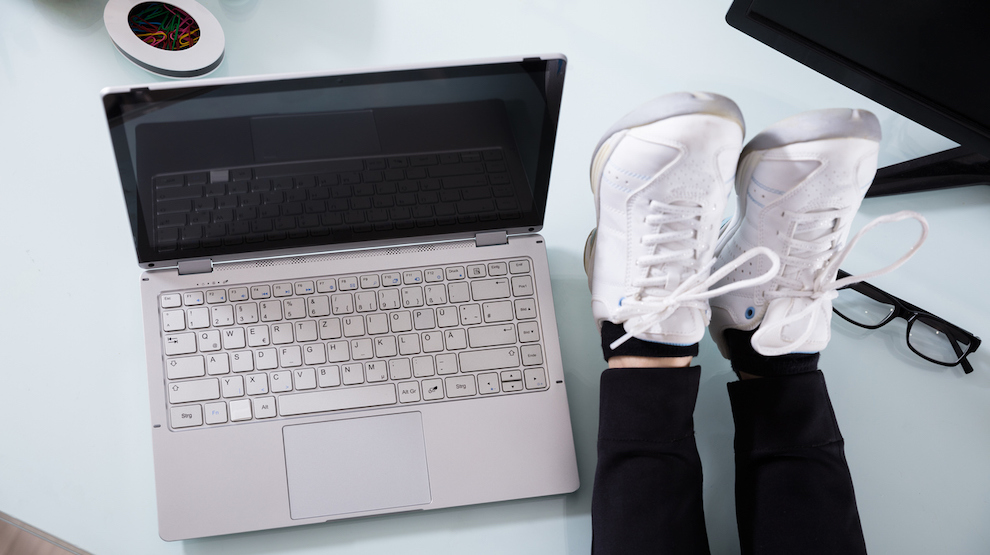The evolution of informal work style
While 2023 finds many workplaces embracing athleisure (think: sneakers, joggers and sweatshirts), back in 2001, nearly four out of 10 executives representing companies with more than 1,000 employees said that casual dress (think: open-toed shoes and tank tops) in the workplace had become too casual.
Is business casual too casual? | Survey Monitor, April 2001
More than one-third (34.2 percent) of executives polled think that business casual dress has gone too casual, according to a survey by Management Recruiters International, Inc. (MRI), Cleveland.
“More than two years ago we conducted a survey of hiring executives about the future of casual dress in the American workplace. Forty percent thought that the suit and tie would eventually vanish from the workplace,” says Allen Salikof, president and CEO of MRI. “But perhaps the pendulum has swung too far. Attire such as open-toed shoes, tank tops and shorts, or sweat suits should be considered too casual for today’s workplace. Yet, more people are dressing in this manner at both start-up entities and Fortune 100 companies alike.
“While no one is suggesting that the three-piece suit make a comeback in Corporate America, employers and employees alike need to find a happy medium in dress style that affords comfort and flexibility and compliments today’s more informal work style, while keeping within the boundaries of taste,” says Salikof says.
A greater percentage of companies within the real estate industry (59.9 percent) and the financial services sector (47.3 percent) said that casual dress in the workplace had become too casual. Nearly four out of 10 executives representing companies with more than 1,000 employees echoed those sentiments.
Regionally, there were also differences. Companies in the North Central (38.5 percent), Mid Atlantic (34.7 percent) and South Atlantic (34.2 percent) regions also were more likely to report that dress had become too casual.
“Companies in the West [29.4 percent], Southwest [29.3 percent] and South Central [24.7 percent] regions were least likely to agree,” says Salikof. “These regions of the country tend to dress more casually in general and warmer temperatures may also play a role in more lax dress code policies at work.
“Casual dress has become a workplace benefit, and prospective employees do take into consideration when exploring a new job opportunity. Employers recognize the value of added comfort throughout the workday, but they need to set the tone or create a policy to govern this benefit just as they would other benefits being offered to their employees. There is just too much room for interpretation on an issue like this.”
